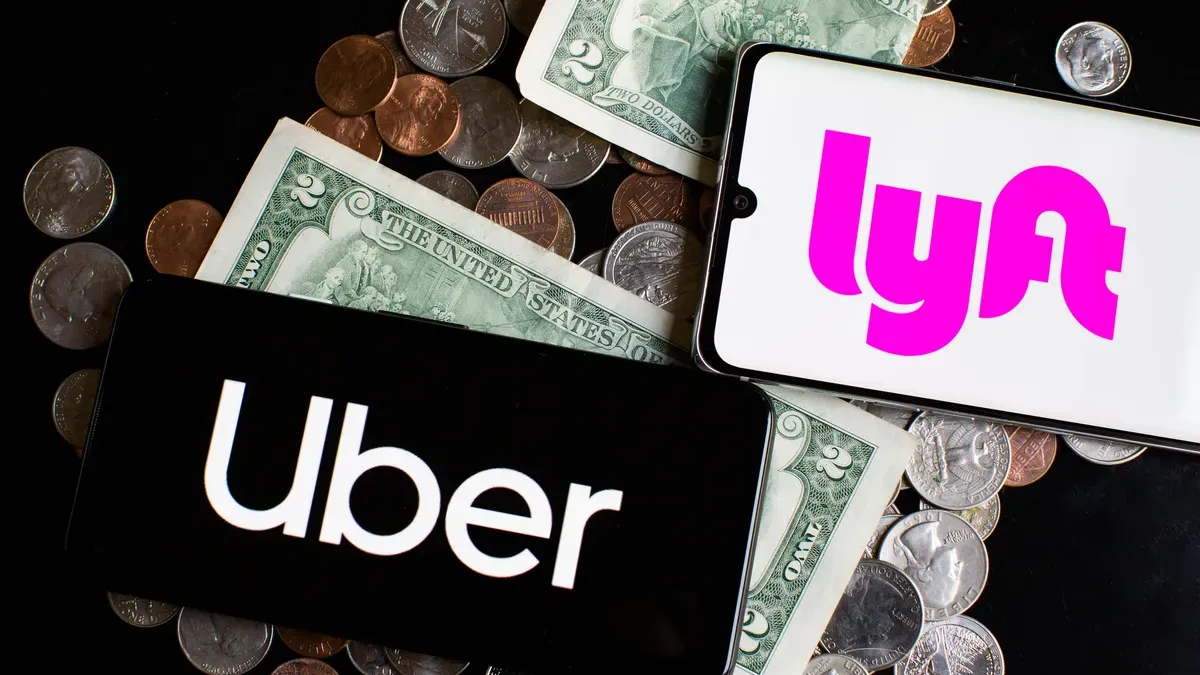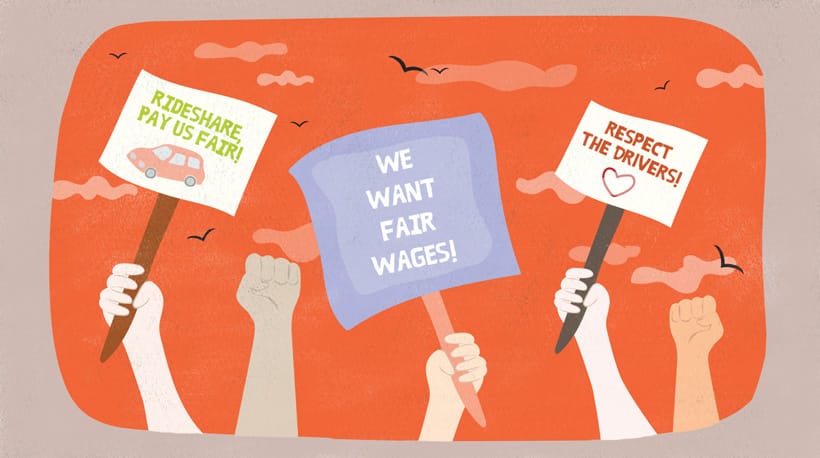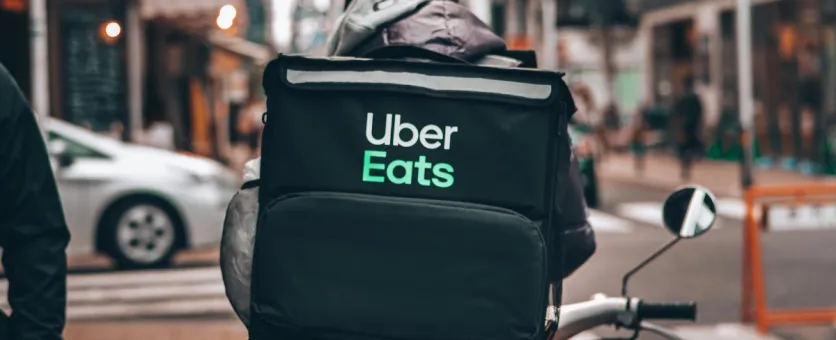Why Many Americans Don't Tip Uber and Lyft Drivers
According to the findings, nearly 90% of food-delivery trips received a customer tip, whereas only 28% of Uber and Lyft ride-hailing trips enjoyed the same generosity.

In the bustling world of the gig economy, where flexibility meets earning potential, tipping has become a crucial aspect of a worker's income. However, recent studies and anecdotal evidence suggest that when it comes to tipping, not all gig workers are created equal. In particular, Uber and Lyft drivers seem to face a significant challenge in garnering consistent tips from their passengers.
The Reality of Ridesharing Industry

It has been over ten years since the emergence of ride-hailing and delivery apps ushered in the era of the gig economy. Uber, launching in 2009, pioneered this model by enlisting independent contractors to ferry passengers using their personal vehicles at their convenience. Since then, Uber's model has proliferated, spawning a cadre of app-driven drivers working across various platforms.
However, the allure of driving for these apps has diminished over time. Operating as independent contractors, drivers providing transportation or delivering goods often find themselves excluded from labor laws dictating fair pay standards. Consequently, it's commonplace for app-based drivers to fall short of earning their state's minimum wage.
In response, lawmakers nationwide are engaging in debates and legislative actions to rectify this situation, proposing new regulations aimed at boosting wages and extending basic worker protections to gig drivers.
Typically, app-based drivers receive a base fee per trip along with tips, with earnings fluctuating based on demand and other variables dictated by the app's algorithm. Yet, being classified as independent contractors, these drivers bear the burden of covering work-related expenses out of their own pockets. In addition to regular living costs, their wages must stretch to cover business expenditures such as taxes, health insurance, vehicle upkeep, and fuel.
Numerous studies have highlighted the issue of subminimum wages among gig workers. According to a June 2022 report by the Economic Policy Institute, nearly a third of gig workers (29%) report earning below their state's minimum wage.
For instance, in New York City, where the minimum wage stands at $15 per hour, app-based delivery drivers make an average of $11.12 per hour after deducting expenses, as revealed by a November 2022 study conducted by the New York City Department of Consumer and Worker Protection.
Similarly, in Chicago, a 2021 study by the Illinois Economic Policy Institute and the University of Illinois at Urbana-Champaign found that Uber and Lyft drivers earned $12.72 per hour after expenses. Considering that the city's minimum wage for employers with 21 or more workers rose to $15.80 per hour in 2023, this wage gap highlights the ongoing struggle for fair compensation within the gig economy.
Tipping Disparities Across the Gig Economy

A comprehensive analysis conducted by Gridwise, a data-analytics company specializing in the gig economy, sheds light on the tipping habits across various sectors of the gig workforce. Their study, based on data from over 500,000 U.S. gig drivers spanning from January 2023 to December, offers valuable insights into the tipping dynamics within the industry.
According to the findings, nearly 90% of food-delivery trips received a customer tip, whereas only 28% of Uber and Lyft ride-hailing trips enjoyed the same generosity. This stark contrast raises questions about why customers are more inclined to tip certain gig workers over others.
One plausible explanation lies in the timing of when tips are solicited. In the case of food delivery, customers often have the option to leave an upfront tip when placing their order. This convenience not only streamlines the process but also increases the likelihood of drivers receiving tips, thus incentivizing prompt service.
On the contrary, tipping for ride-hailing services typically occurs during or after the ride, leaving it more susceptible to factors like passenger experience, mood, or even forgetfulness. This delayed gratification model could potentially contribute to lower tipping rates among Uber and Lyft drivers.
The Gridwise study further highlights the financial significance of tipping for gig workers. It reveals that 51% of food and grocery drivers' incomes are derived from tips, compared to a mere 10% for ride-hailing drivers. These statistics underscore the critical role tipping plays in the livelihoods of gig workers, especially those reliant on platforms like Uber and Lyft for their earnings.
Declining Tipping Rates
The challenges faced by Uber and Lyft drivers extend beyond mere timing. A deeper dive into the data reveals a troubling trend of declining tipping rates over the years. Gridwise's analysis shows that ride-hailing drivers' average tips per working hour peaked at $2.53 in the second quarter of 2022 but gradually fell to $2.06 by the third quarter of 2023.
This decline in tipping frequency poses a significant threat to the financial stability of Uber and Lyft drivers, many of whom rely on tips to supplement their income and make ends meet. Several factors may contribute to this downward trend, including economic fluctuations, changing consumer behaviors, and even platform policies.
Some drivers have pointed fingers at Uber and Lyft, attributing the decline in tipping to rising trip prices and other changes implemented by the platforms. They argue that these alterations have deterred passengers from tipping as generously as before, further exacerbating the financial strain on drivers.
While Uber claims to have taken steps to encourage higher tips, including allowing riders to tip during a trip, the effectiveness of these measures remains debatable. Lyft, on the other hand, has remained silent on the issue, leaving drivers feeling unsupported and disillusioned.
Social Norms and Tipping Behaviour
The tipping dilemma faced by Uber and Lyft drivers is not merely a matter of financial concern but also one of social norms and expectations. Past research has shown that tipping culture varies significantly across industries, with food delivery drivers often receiving more consistent tips than their ride-hailing counterparts.
A study conducted by Stanford and University of Chicago researchers in 2019 revealed that only 16% of Uber rides received tips, with a mere 1% of riders tipping for every trip. This disparity highlights the need for a deeper understanding of the underlying factors driving tipping behavior in the gig economy.
In a Pew Research survey of nearly 12,000 U.S. adults, 76% admitted to always or often tipping their food-delivery drivers, while only 61% said the same for taxi or ride-hailing services. This discrepancy in tipping rates underscores the nuanced relationship between service type, tipping norms, and customer expectations.
One possible explanation for the disparity in tipping rates between food delivery and ride-hailing services lies in the perceived value of the service provided. Customers may view food delivery as a more tangible and personal service, making them more inclined to tip their drivers generously.
Moreover, the option to tip upfront when placing a food delivery order creates a sense of obligation and reciprocity, further encouraging customers to tip their drivers. In contrast, the transient nature of ride-hailing services may diminish the perceived need for tipping, especially when passengers can easily overlook the option to tip after reaching their destination.
The COVID-19 pandemic has also played a role in shaping tipping behaviors within the gig economy. Early in the pandemic, many customers exhibited heightened generosity towards gig workers, including Uber and Lyft drivers, as a gesture of solidarity and support during uncertain times.
However, as the pandemic dragged on and economic realities set in, this initial wave of generosity waned, leading to a decline in tipping rates across the board. Factors such as inflation, job insecurity, and financial strain may have contributed to customers' reluctance to tip as generously as before, further exacerbating the challenges faced by gig workers.
In conclusion, the tipping conundrum faced by Uber and Lyft drivers reflects broader issues within the gig economy, including income inequality, fluctuating consumer behaviors, and evolving social norms. While tipping can significantly impact a gig worker's livelihood, the responsibility ultimately falls on both customers and platforms to create an environment conducive to fair compensation and mutual respect.
As we navigate the complexities of the modern workforce, it is essential to recognize and address the challenges faced by gig workers, including the precarious nature of their income and the vital role tipping plays in their financial well-being. By fostering a culture of appreciation and generosity, we can ensure that gig workers, including Uber and Lyft drivers, receive the recognition and compensation they deserve for their invaluable contributions to our daily lives.





